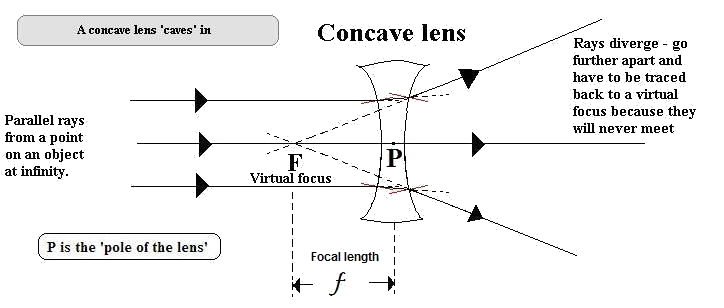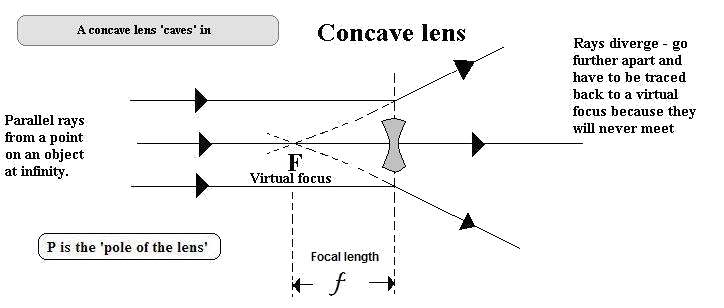LENSES
Lenses are used to focus light. They do this by refraction.
You need to know the names of two types of lens and the way that they refract three parallel rays of light.
In the diagram below a SYMBOL for the lens is used - showing the refraction at each surface is then not necessary... it is shown happening at a 'line' - in exam questions make sure you carefully look to see whether symbol or lens drawing is required.
A convex lens close to the object (a distance less than the focal length) give a virtual, erect, enlarged image - it works as a magnifying glass.
A convex lens at an infinite distance from an object produces a real (can be picked up on a screen), inverted image. This fact is used in the camera to photograph distant objects.
A convex lens focuses the parallel rays of light from the sun into a point focus. It can therefore set things alight.


In the above diagram the refraction of the rays is shown at BOTH lens surfaces.
In the diagram below a SYMBOL for the lens is used - showing the refraction at each surface is then not necessary... it is shown happening at a 'line' - in exam questions make sure you carefully look to see whether symbol or lens drawing is required.

The pole of the lens is the centre of the lens. Rays drawn passing through this point are not diverted, they continue in a straight line.
The focal length of a lens is the distance between the pole of the lens and the focal point OR the perpendicular distance between the axis of the lens and tha focal plane.
The focal point or principal focus of a convex lensis point through which rays of light travelling near to and parallel to the principal axis pass after refraction by the lens. (The point all emerging rays pass through).
No comments:
Post a Comment